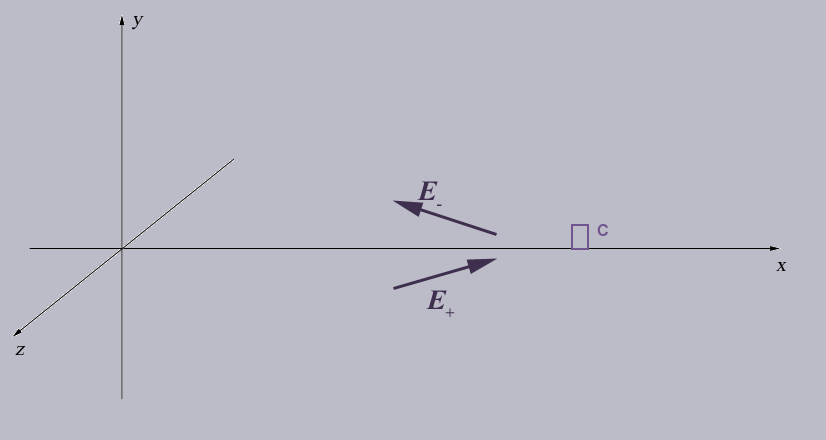Maxwell's Equations
and Light
James Clerk Maxwell
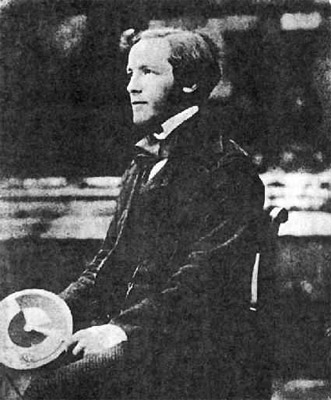
- Born in Scotland (1831) and educated in Edinburgh and Cambridge.
- Went through an Evangelical conversion (1853).
- Argued (1859) mathematically that Saturn's rings must consist of small chunks.
- Laid off from his position as department chair in 1860 in the merger which resulted in the University of Aberdeen.
Magnetic field around a wire

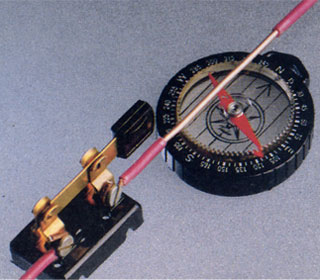
Ampere's Law (1826)
`int_C`B`{::}_{||} d ell= mu_0 I_{enc} ` For an ~infinite wire: `rArr B = \frac{mu_0 I}{2\pi r}`
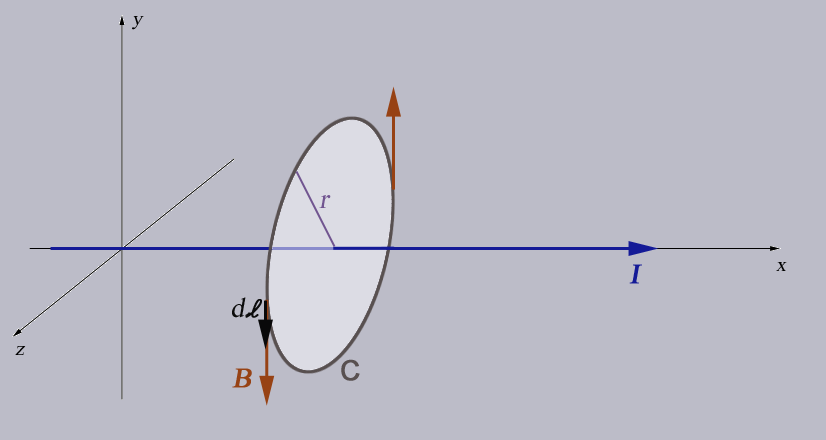
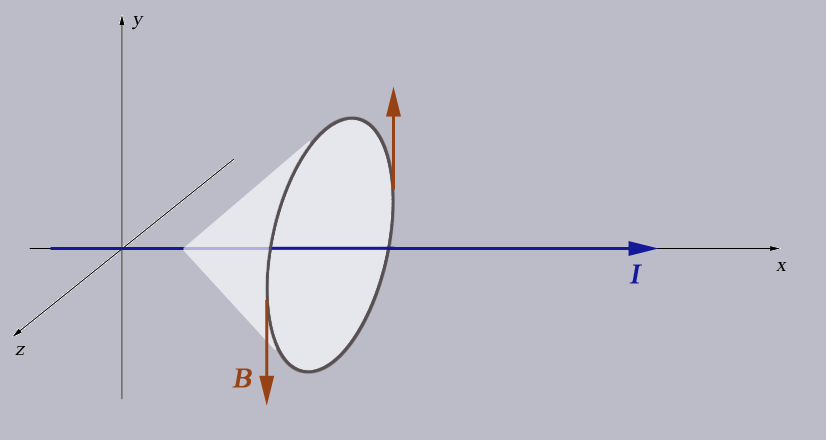
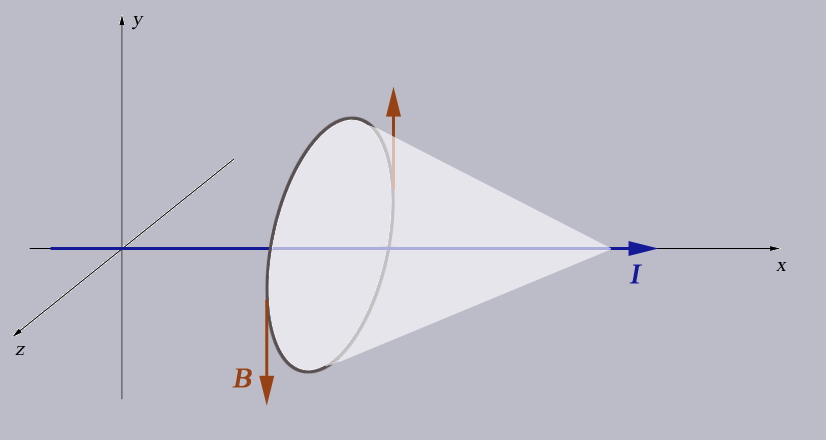
Is there a problem here?
If there is current in the wire, then either `B=(mu_0 I)/(2 pi r)` or `B=0` depending on the choice of surface. ... But is there any current at all?
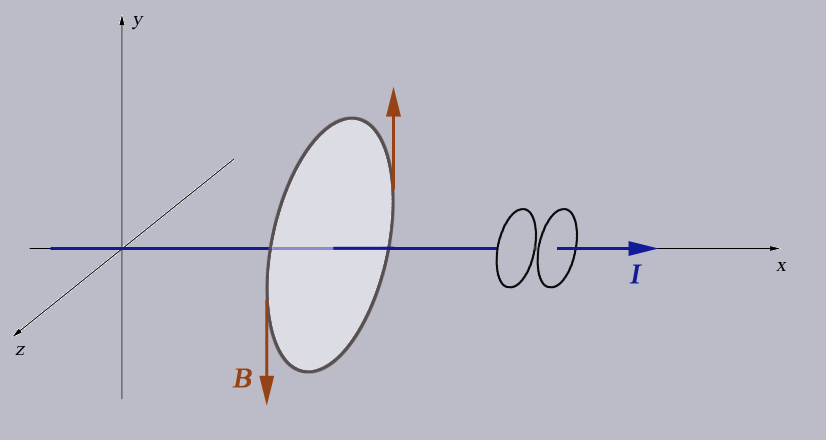
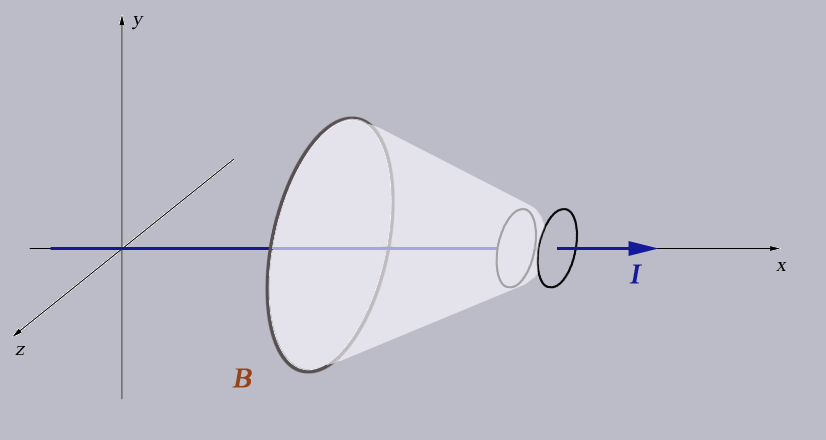
Circuits with Capacitors

Current is moving charge. When the switch 'S' is closed...
- does current flow? In just one circuit or both?
- If current flows...does it ever stop?
- What does E`(t)` between the plates look like?
Maxwell notices a problem (1861)
We can arrange to have current in the wire. Then `B=(mu_0 I)/(2 pi r)` or `B=0` depending on the choice of surface.


Maxwell's proposed resolution
If `I` is the current flowing into (and out of) the capacitor, and we draw our surface `S` in between the plates where certainly `I=0`,
we'd like something that...

| penetrates the surface like `I` would: | `int_S E_{_|_} dA` |
| is proportional to `I`: | `frac{d}{dt}int_S E_{_|_} da` |
| is equal in magnitude to (and has the same units as) `I`: | `epsilon_0 frac{d}{dt}int_S E_{_|_} da` |
Modified Ampere's law
`int_C``B`{::}_{||} d ell= mu_0 I + mu_0 epsilon_0 frac{d}{dt}int_S E_{_|_} da `

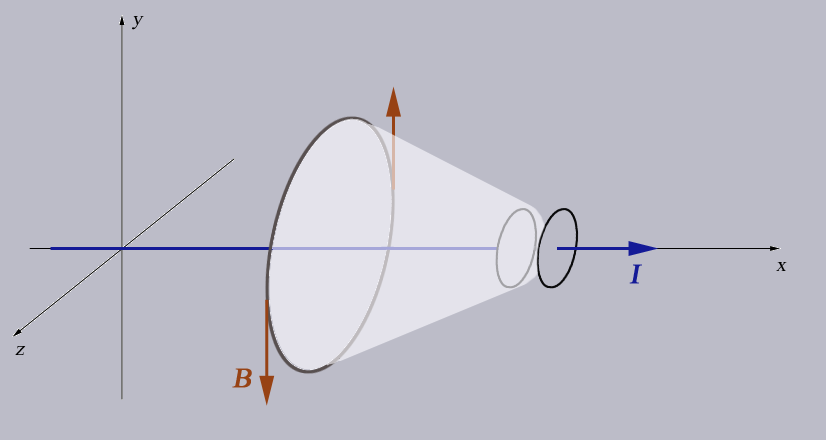
Maxwell's thinks on these four...
| `int_S` ` E_{_|_} dA = frac{1}{epsilon_0} Q_(e n c) | Gauss' law (1835) |
| `int_S`` B_{_|_} dA = 0` | Gauss' law for magnetism (no monopoles ... well not many) |
| Ampere's law (modified) | |
| `int_C`` E`{::}_{||} d ell = - frac{d}{dt}int_S B_{_|_} dA` | Faraday's law (1831) |
What if we combine equations to get rid of, say B, and find a new equation for only E?
E-field of an oscillating dipole
Close to the x-axis shown, and far from the dipoles, the electric field has only a `y`-component.
Apply Faraday's law to small contour
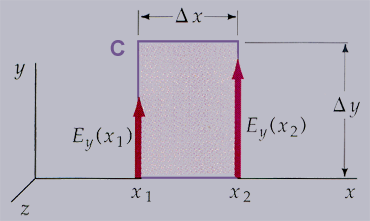 `int_C`E`{::}_{||} d ell` `int_C`E`{::}_{||} d ell` | `=` | `-frac(d)(dt)int_S B_{_|_} dA` |
| `E_y(x_2) Delta y - E_y(x_1) Delta y | `=` | `-frac(d)(dt)B_z Delta x Delta y` |
| `(E_y(x_2) - E_y(x_1)) Delta y approx (frac(del E_y)(del x) Delta x) Delta y | `=` | `-frac(del B_z)(del t) Delta x Delta y` |
| `frac(del E_y)(del x)` | `=` |
Apply Ampere's law to small contour
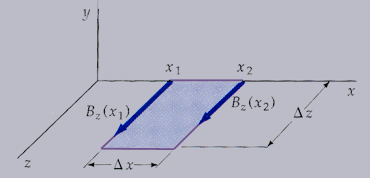 `int_C`B`{::}_{||} d ell` `int_C`B`{::}_{||} d ell` | `=` | `mu_0 epsilon_0 frac(d)(dt)int_S E_{_|_} dA` |
| `rArr frac(del B_z)(del x)` | `=` | `-mu_0 epsilon_0 frac(del E_y)(del t)` |
| `frac(del)(del t) (frac(del B_z)(del x))` | `=` | `frac(del)(del t) (-mu_0 epsilon_0 frac(del E_y)(del t))` |
| `frac(del)(del x) (frac(del B_z)(del t)) = frac(del)(del x)(-frac(del)(del x) E_y)= -frac(del^2)(del x^2)E_y` | `=` | `-mu_0 epsilon_0 frac(del^2 E_y)(del t^2)` |
Wave equations
Springs:
`F=ma` for a spring is `k h =mfrac(d^2 h)(dt^2)`. Solution: `h(t)= h_0 sin 2pitf`
Sound:
`frac(del^2)(del x^2)P(x,t) = frac(1)(v^2)frac(del^2)(del t^2)P(x,t)`. Solution: `P(x,t) = P_0 sin 2pi(x/v -t)f`
This is also a wave equation:
`frac(del^2)(del x^2)E_y=mu_0 epsilon_0 frac(del^2 E_y)(del t^2)`
`f` is frequency
`v` is the velocity (of sound).
Electro-magnetic wave equation
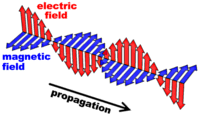 `frac(del^2)(del x^2)E_y = mu_0 epsilon_0 frac(del^2 E_y)(del t^2)` is a wave equation!
`frac(del^2)(del x^2)E_y = mu_0 epsilon_0 frac(del^2 E_y)(del t^2)` is a wave equation!
The velocity is `frac(1)(sqrt(epsilon_0 mu_0)) approx 3 times 10^8`m/sec, pretty close to `c`, the speed of light.
Just a coincidence? Maxwell (1862): "We can scarcely avoid the conclusion that light consists in the transverse undulations of the same medium which is the cause of electric and magnetic phenomena."
Unification
Maxwell connects electricity and magnetism with light.
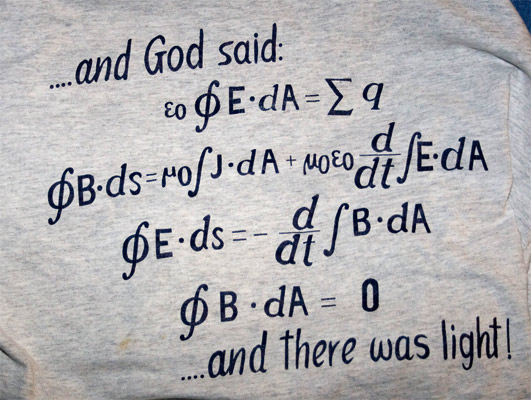
His equations top the charts of greatest equations.
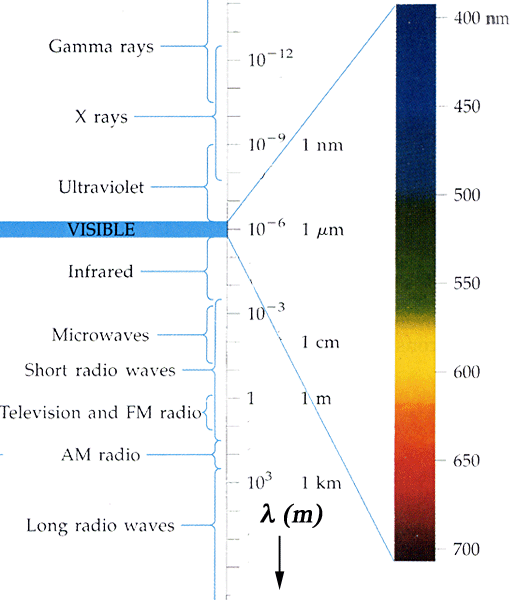 E-M spectrum
E-M spectrum
Problem: What's the B field?
Q: That solution for travelling sound waves suggests that a solution to the wave equation for E in the situation we've been looking at is:
E`=E_y(x,t) hat(y) = E_0 sin 2pi (x/c -t)f hat(y)`
Guess that the magnetic field is also a sinusoidal function like
B=`B_z(x,t) hat(z) = B_0 sin 2pi (x/c -t)f hat(z)`, and if that's the case...
What's the amplitude `B_0` in terms of `E_0`?
With...
`B_z = B_0 sin 2pi (x/c -t)f`, and `E_y = E_0 sin 2pi (x/c -t)f`
Use that relationship:
`frac(del B_z)(del x)= -mu_0 epsilon_0 frac(del E_y)(del t)
= -1/c^2 frac(del E_y)(del t)
` to eventually find that `B_0 = E_0 / c`
Energy in E-M waves
E-M waves arise because of accelerated charges.
- Why do hot things glow? Why do hotter things glow with a higher frequency (shorter wavelength)?
- Can Electro-magnetic waves really propagate through a vacuum? What's the evidence?
- Do Electro-magnetic waves carry energy? What's the evidence?
Poynting vector
The Poynting vector is the energy of an E-M wave per unit time, and per unit area cross section perpendicular to the direction of propagation.:
S = `frac(1)(\mu_0)`E`\times`B, and Power`=int_(cc S) `S`\cdot d`a.
 What is the direction of the Poynting vector, according to this simulation?
What is the direction of the Poynting vector, according to this simulation?
The time average of the Poynting vector is the average
power (per unit area) in the wave or Intensity, `I`:
`I=S_text(ave)=frac(1)(2)frac(1)(\mu_0)E_0 B_0=frac(E_0^2)(2\mu_0 c)`
Photoelectric effect
Light shining on some metal surfaces causes the surface to become positively charged--that is, electrons are knocked out.
You would think that the number of electrons knocked out is proportional to the light intensity (total energy), right?!?!
Read the two web pages starting at... On the photoelectric effect. Short reading quiz on Wednesday! Reading question: The kinetic energy of electrons knocked out of the metal does not depend on the energy intensity of the light, but on something else. What characteristic of light does it depend on... and why?
Image credits: Maxwell t-shirt; Capacitor plate diagram; Young James Clerk Maxwell; Contour diagrams: Paul Tipler, Physics for Scientists and Engineers, 4th edition, 1991. Propagating e-m wave
